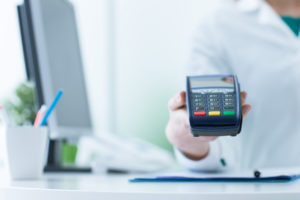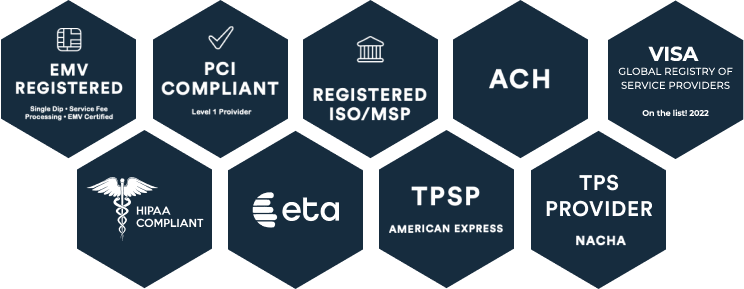Medical debt is overwhelming patients and saddling them with lasting health issues. Frustrating and outdated billing practices in the healthcare industry can exacerbate the problem. Deciding to switch to paperless billing can take a burden off your patients’ shoulders and streamline your system.
There are various benefits to going paperless in healthcare, and in this article, we’re sharing the top seven reasons you should implement this system into your practice.
What Does Going Paperless in Healthcare Mean?
Going paperless in the healthcare field means getting rid of any physical paperwork like bills, statements, and patient records.
In 2019, the CDC found that around 42% of providers still exclusively use paper and manual procedures for bill collection. Switching to paperless processes may feel intimidating if your practice relies solely on paper. This hurdle is likely why many providers still prefer the traditional operating method.
However, for most providers, the benefits of paperless billing far outweigh the struggle of the initial pivot.
7 Benefits of Paperless Billing
Healthcare practices have abundant information to store, including patient records, billing data, procedure notes, and more. It tends to add up quickly, meaning you could fill your office space with clutter that needs constant sorting. Going paperless cuts down on the overflow and gives you and your employees room to breathe. At the same time, you’re reaping further benefits:
1. Saves Money
Cost savings are the most practical benefit of going paperless. The savings are most apparent when you consider postage prices.
Forever Stamps, meant to save money and equal First-Class Mail postage, increase yearly. In just over ten years, the Forever Stamp’s price has gone up 20 cents. Imagine sending 100 or more bills weekly.
That cost analysis doesn’t include the money you’ll spend on envelopes, the time your employees spend assembling bills, and the paper required to produce those bills. Ultimately, paperless billing practices make more financial sense.
2. Satisfies Patients
Many patients prefer less paper in their lives and digitizing their bills. According to one study, 56% of patients want a digital billing experience.
You can increase patient payments by providing a better experience for them. A digital option makes patients more likely to pay their bills on time. Even showing that you’re trying to go paperless can improve a patient’s outlook on your organization.
3. Makes Getting Payments Easier
As shown above, many patients would rather switch to paperless billing. Here are other ways that going digital can make payments easier on everyone:
- Patients can pay at their convenience, even if you’re closed.
- Send texts or emails to remind patients that their bill is due.
- Enable secure digital wallet management so patients’ can store their cards on file, making future payments easier.
- Communicate with patients ahead of time on how much they owe.
- Digitize the invoicing process to accelerate time to revenue.
- Going digital allows more payment-type options.
- Enable text-to-pay options so patients can pay bills directly on their smartphones.
4. Improves Communication with Patients
Part of improving a patient’s experience is communication. Trying to communicate by mail causes a long delay between question and answer, not to mention the overhead expense of printing and processing “snail mail.”. An online patient portal will speed up communication exponentially.
Determining patients’ preferred communication method can be advantageous for all parties. Some people prefer text message reminders about their appointments; others would rather receive an email. Opening better communication channels will improve your reputation and earn further patient trust.
5. Easier to Track and Maintain Information
Going digital makes handling information much easier for you, your employees, and your patients:
- There’s no digging through files.
- Employees can type a name into a search bar to find a patient.
- All information is consolidated.
- Information is more accessible for your employees and patients.
- Updating or correcting a mistake is accomplished within seconds.
- Information will be easier to read.
6. Offers More Protection
As a healthcare provider, one of your top priorities is protecting your patients’ sensitive information. Maintaining HIPAA compliance is essential for handling billing information.
Going digital lets you put all your information in a secure, easily accessible location for your employees. Patient portal software offers extra protection from hackers.
Going paperless can also prevent document loss. If you use cloud storage, the information is protected and accessible even if something goes wrong with your computer system.
7. Better for the Environment
Around 15 billion trees are cut down annually worldwide, making paper a substantial resource and straining the environment. Decreasing your paper usage makes you more environmentally friendly, which may align more with your values and those of your patients.
How You Can Go Paperless
Wondering how you can get started with paperless billing? Here are a few initial implementations that make a significant difference:
- Web Patient Portal: A portal lets you manage payments, share statements, upload and host medical records, and have employees and patients communicate with each other.
- Emails: With email, you can communicate with patients, remind them of appointments and upcoming bills, and send statements without paper.
- Cloud storage: Information, like patient records, is saved to the internet and accessed via password-protected devices.
Let your patients know when you’re ready to make the jump and go paperless. Some may be more accustomed to paper processes than others and need time to adjust their expectations.
Go Paperless and Elevate Your Billing System with CORE
CORE’s platform is a healthcare revenue cycle manager that helps manage, collect, and oversee different revenue streams. Our cloud-based platform allows your patients to pay anytime and anywhere without worrying about security risks.






